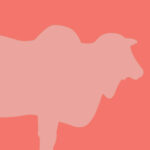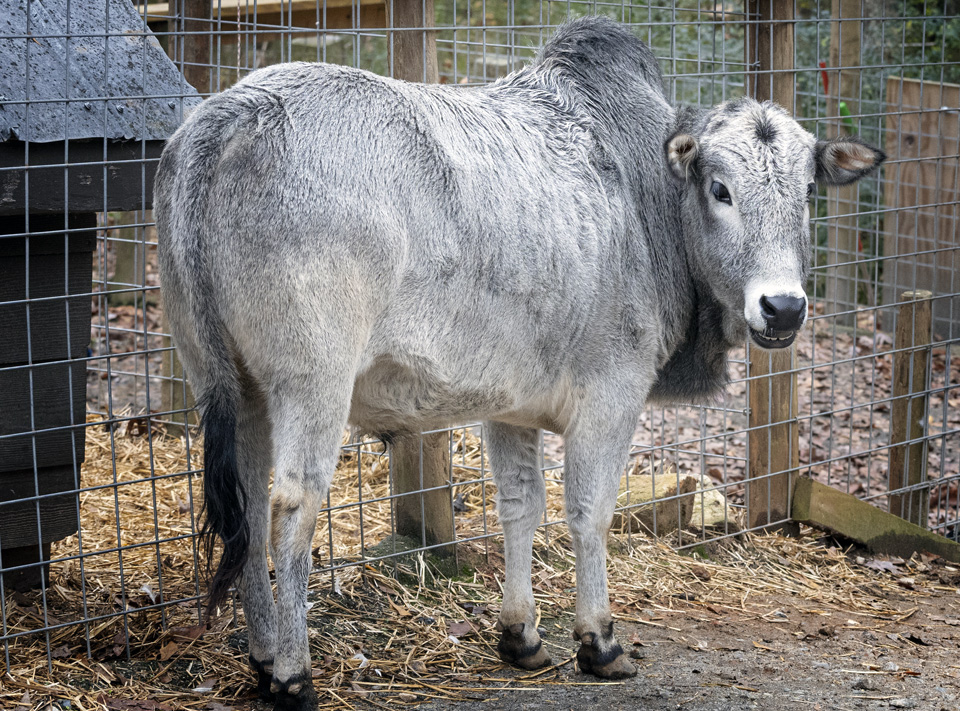
MINI ZEBU
Mini Zebus are one of the oldest breeds of cattle, possibly dating back as far as 6000 B.C.

PROFILE
Zippity came to us from a Zebu dairy farmer nearby in Loganville, Georgia. He spent his first few days at the home of the sanctuary’s owners where he was often seen “zipping” around much like a puppy. He is a very sweet boy that still loves to drink milk from a bottle.
OVERVIEW
CONSERVATION STATUS
Least Concern
AVERAGE SIZE
Compared to a 6′ Man
AVERAGE WEIGHT
Females: 300 lbs
Males: 600 lbs
AVERAGE LIFESPAN
20 Years
DIET
Herbivore
REGIONS
Southeast Asia
Also known as Nadudana Zebus, they originated in South India and the island of Sri Lanka. Their habitats are primarily tropical forests, jungles, wetlands, and swamps. They also live in open grasslands, meadows, and plains. While there are some feral populations, most of these cattle live under human care on farms and pastures. Miniature Zebu have become popular throughout the world due to their small size which requires less space for grazing and less food consumption.
APPEARANCE
Usually a steel gray color, miniature zebu coloring can include black, reddish-brown, cream, spotted, paint, brindle, and white. Bull miniature zebus tend to be darker than the cows. Male and female miniature zebus have a dewlap on their throat that helps them tolerate warmer temperatures as the blood that circulates through that air is cooled before returning to the rest of their body. They have a large hump on their back between their shoulders (males typically have a larger hump) and drooping ears. Unlike a camel’s, the Zebu’s hump is made of muscle and bone and does not store water. Both sexes of zebu have horns that point up or sweep back, and much like other cattle, the bull’s horns are generally larger and more stout than the cow’s.
CHARACTERISTICS
Miniature zebus have adapted to the warm tropical climate of southern Asia. Like all the breeds of zebu cattle, miniature zebus are hardy. They naturally possess resistance to parasites and diseases. Their robust nature and small stature make the miniature zebu the ideal livestock for locations with limited space and forage availability. It is believed that miniature zebus are the only true breed of miniature cattle. They evolved naturally over thousands of years with minimal human selection.
Zebus enjoy chewing on any grasses they can get their teeth into. As ruminants, they graze for eight hours a day interspersed with resting and chewing cud.
Zebus are preferred over equines for pulling farm machinery because they can maintain a steady pace in very hot and humid conditions. When used for transport purposes, people may prefer zebus over horses or donkeys, because they are generally less likely to get frightened.


